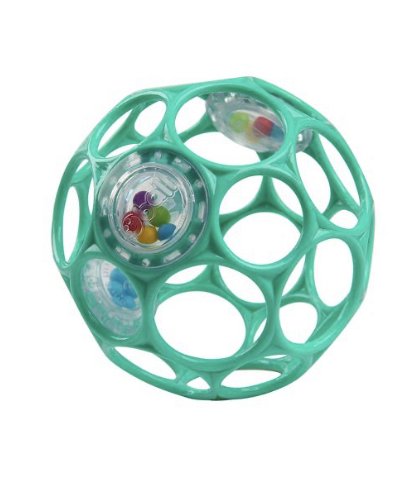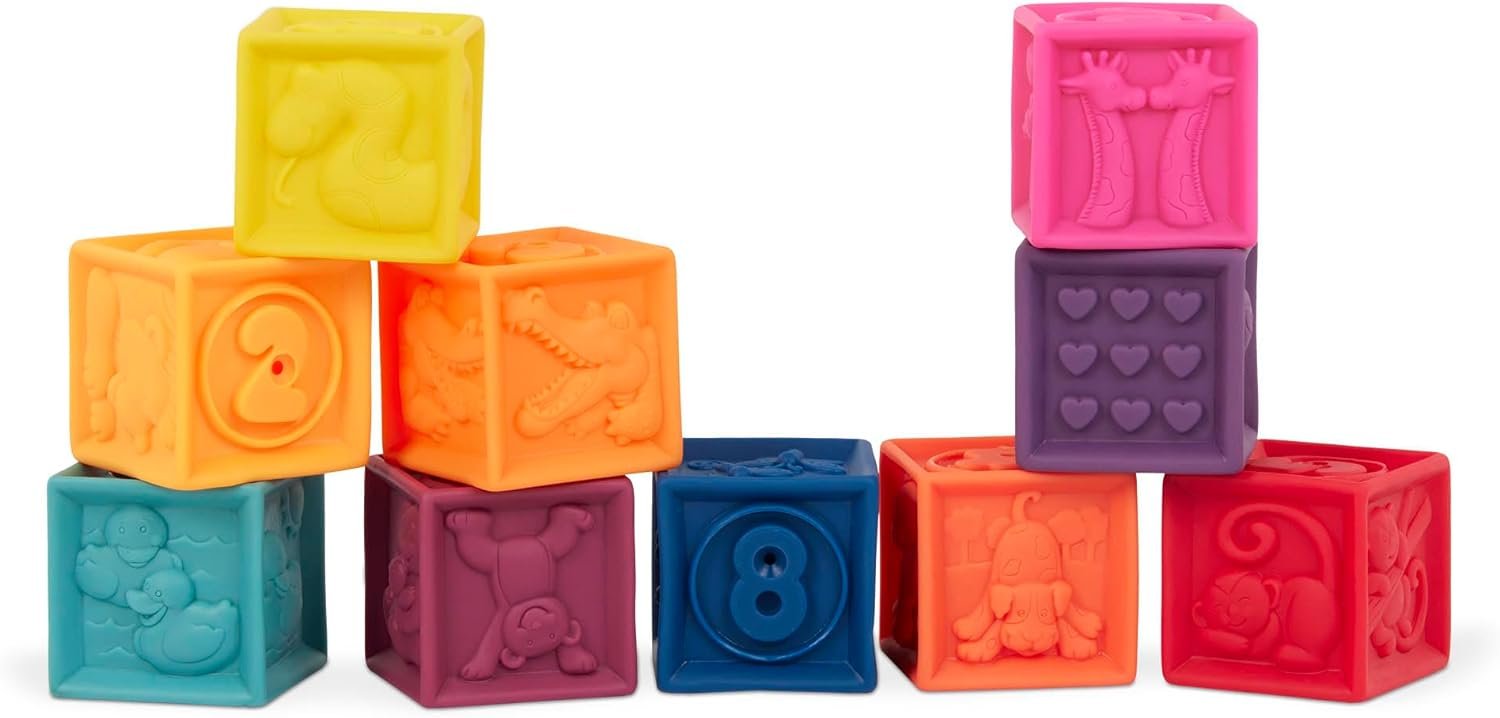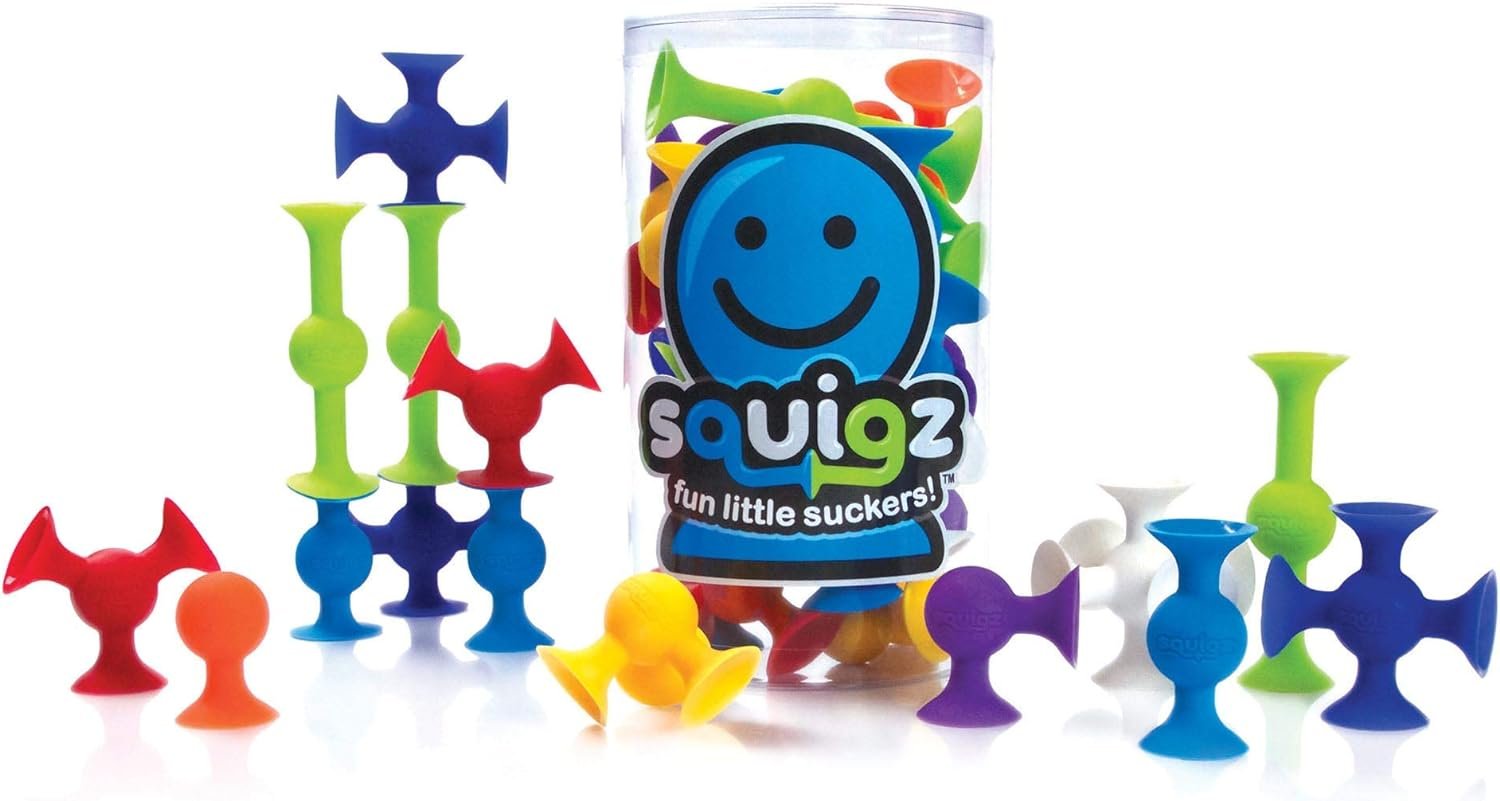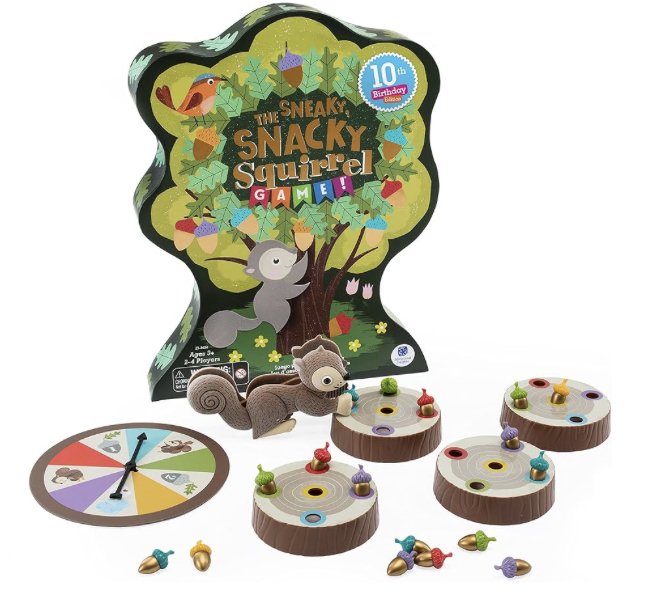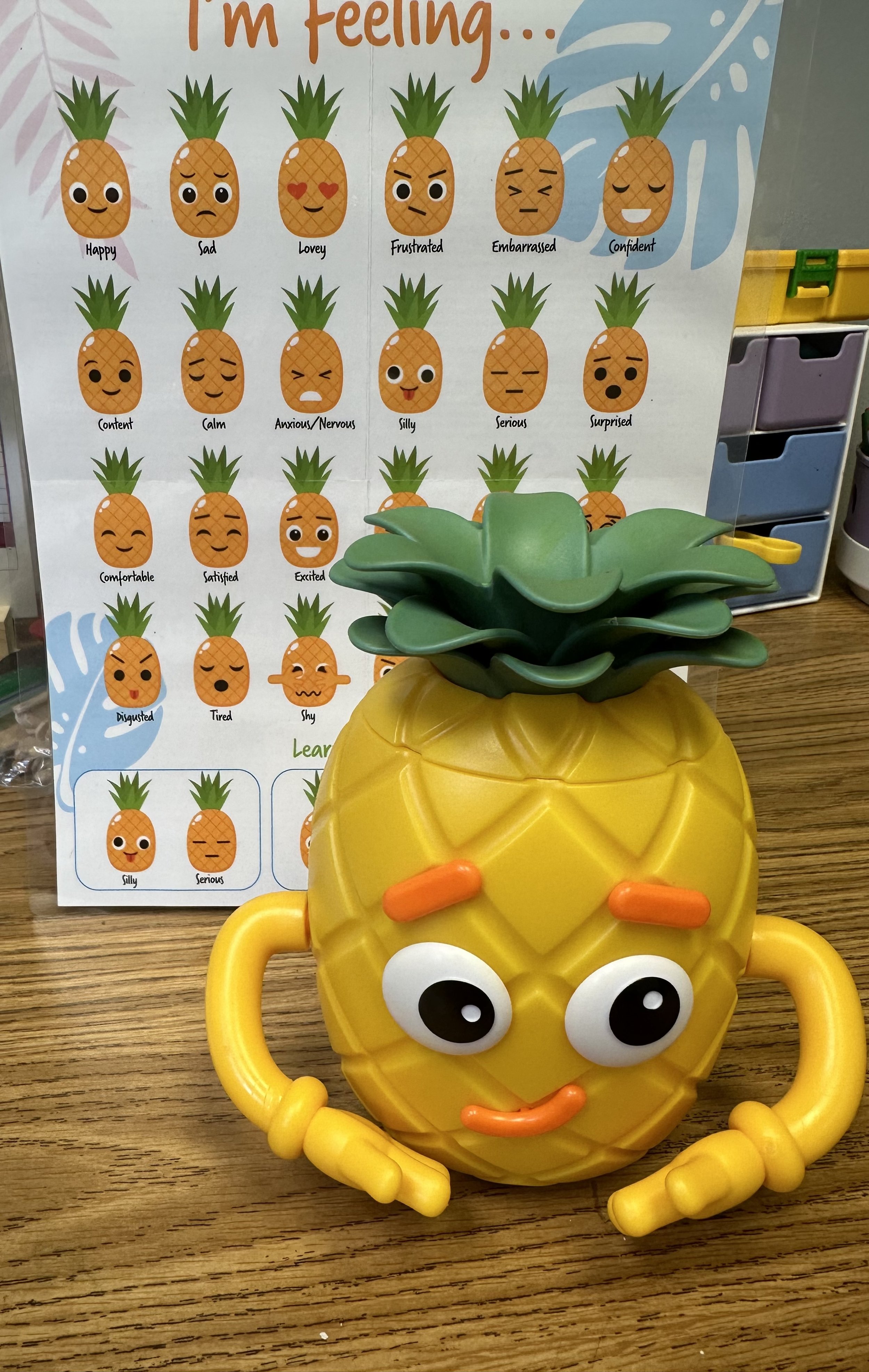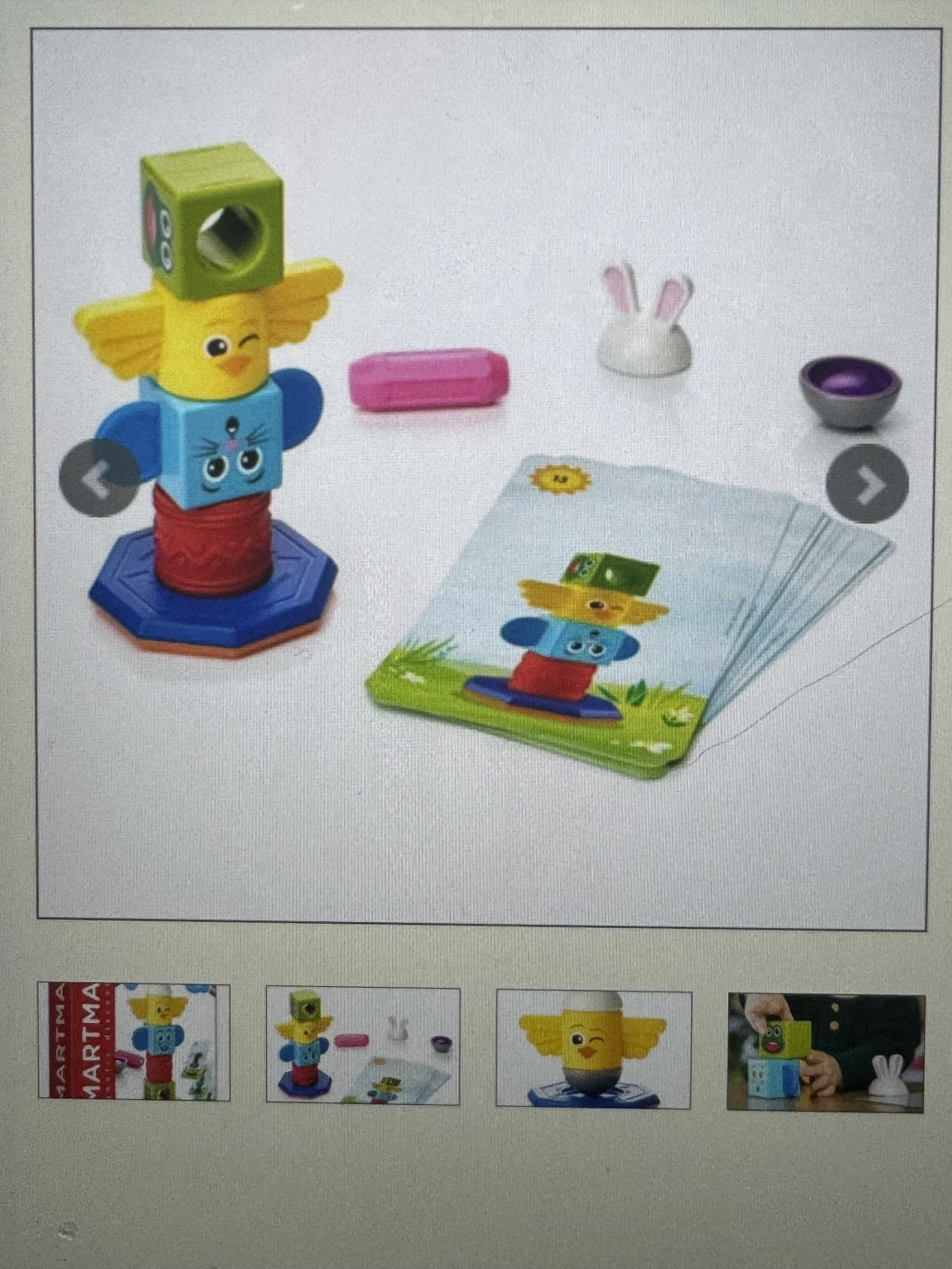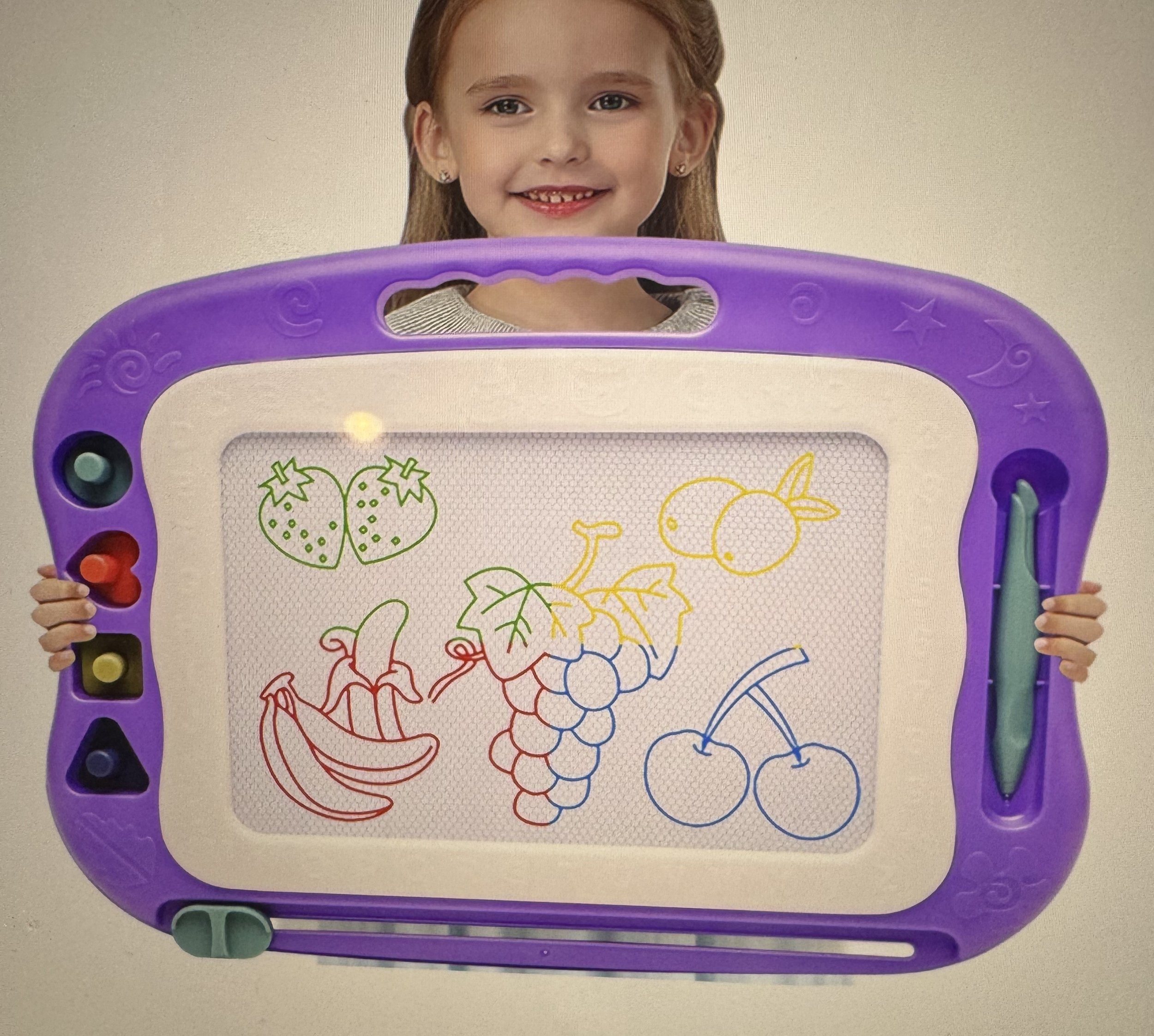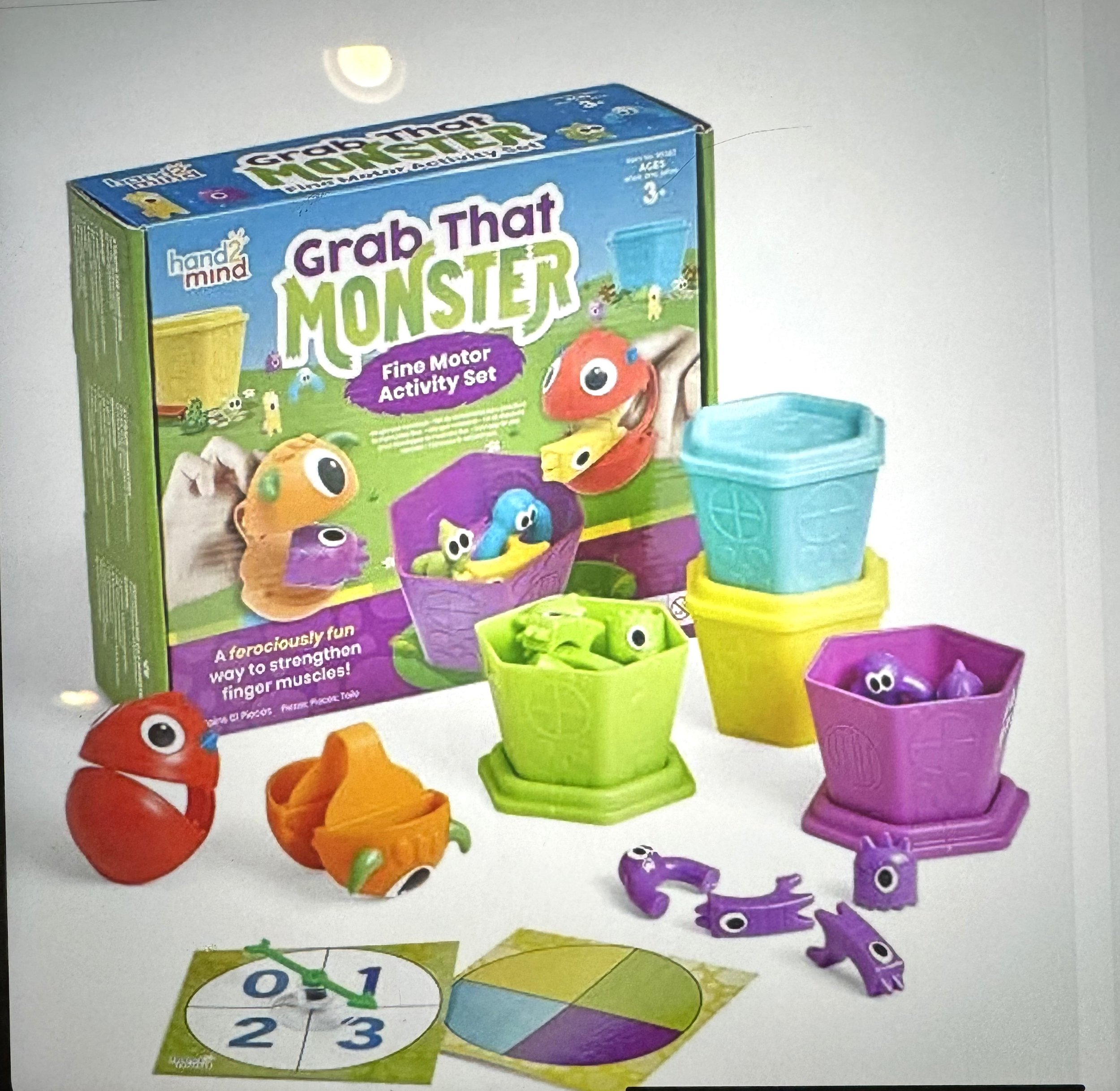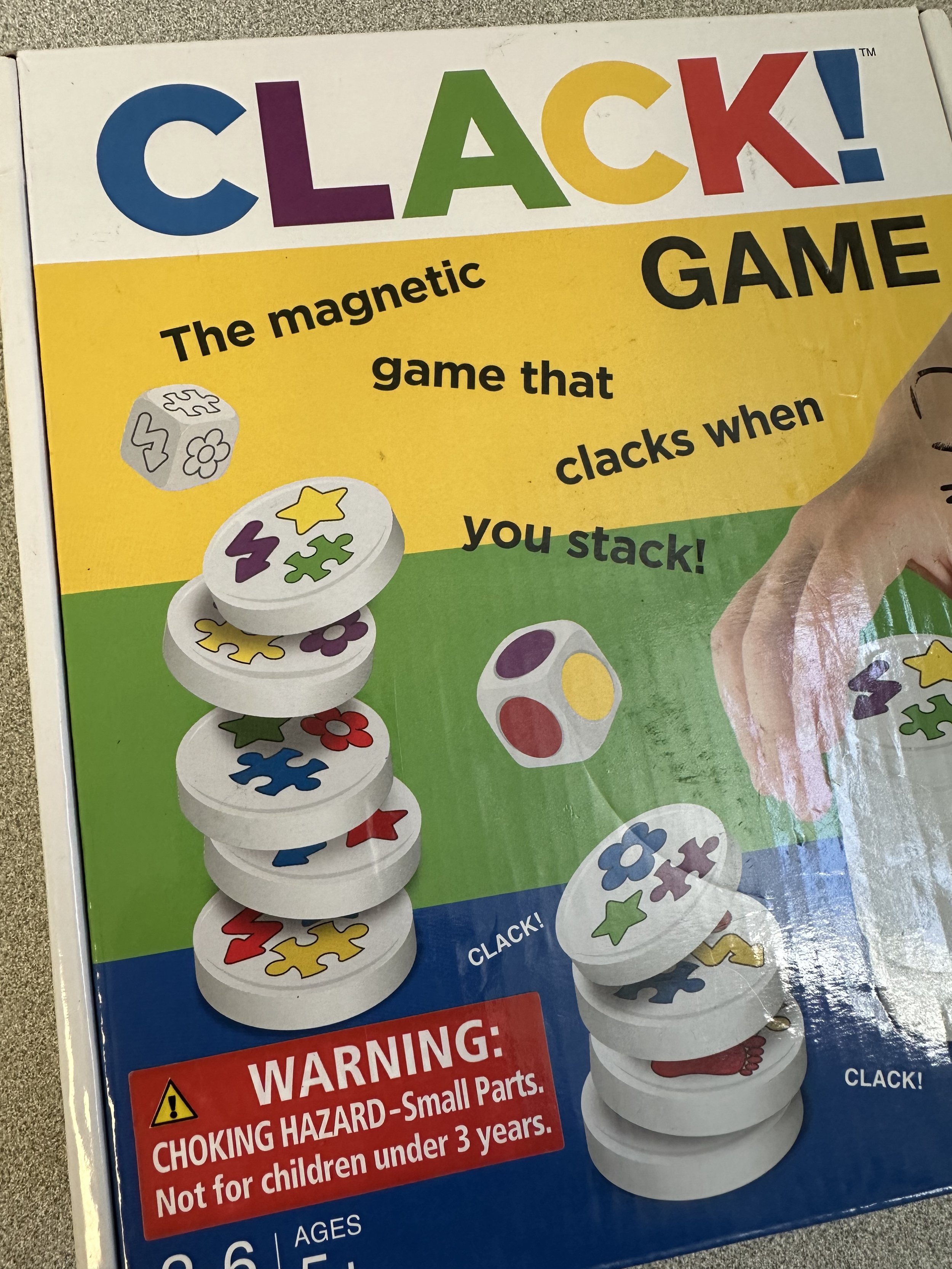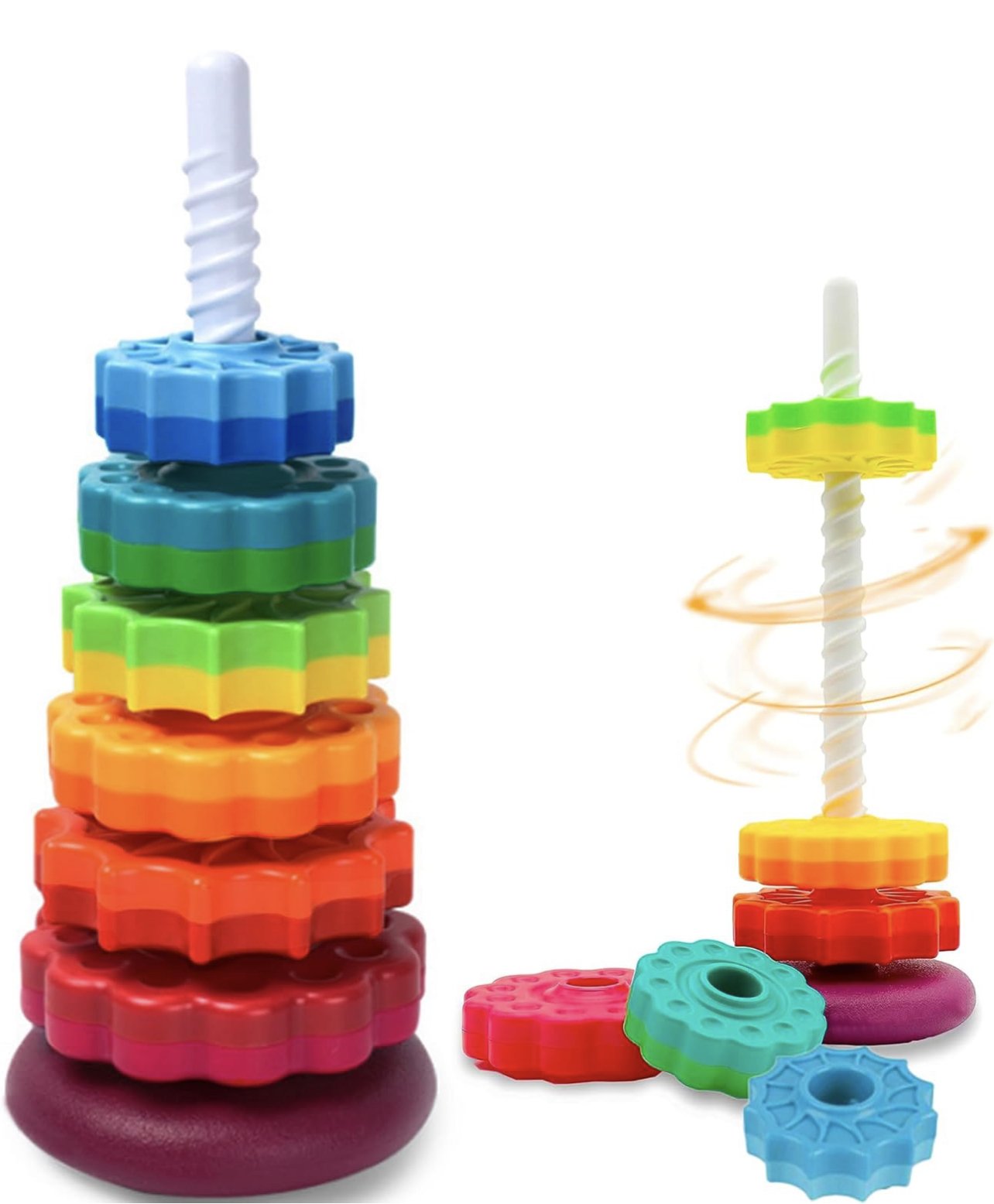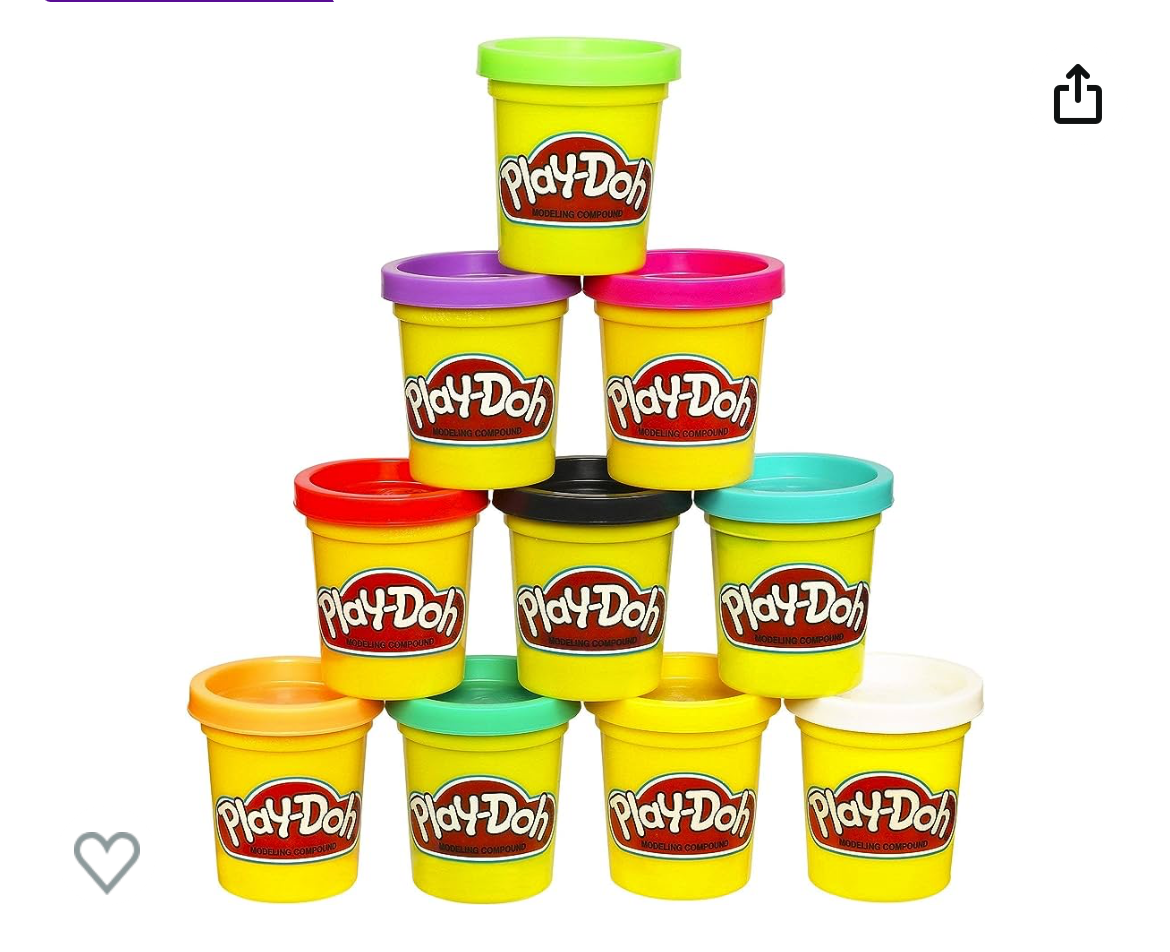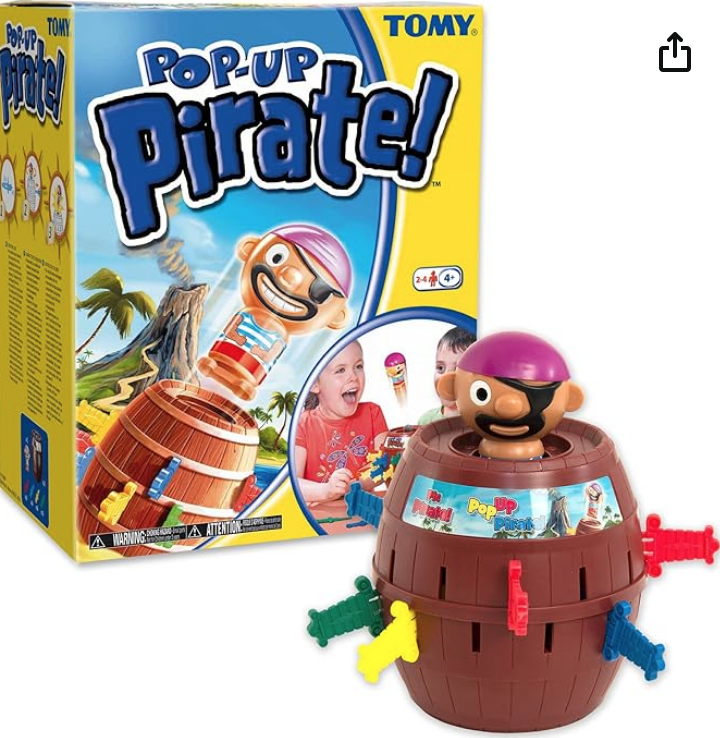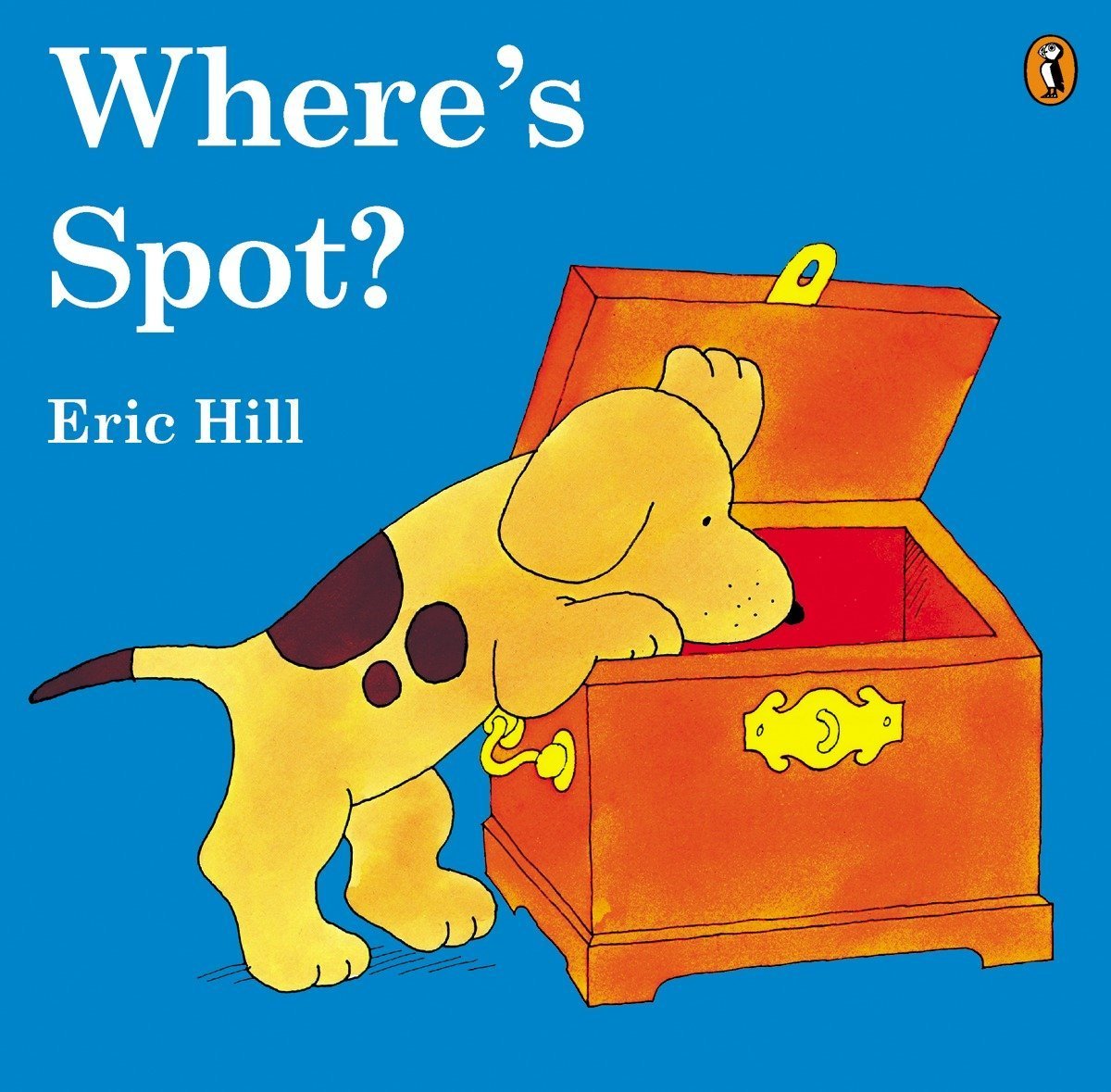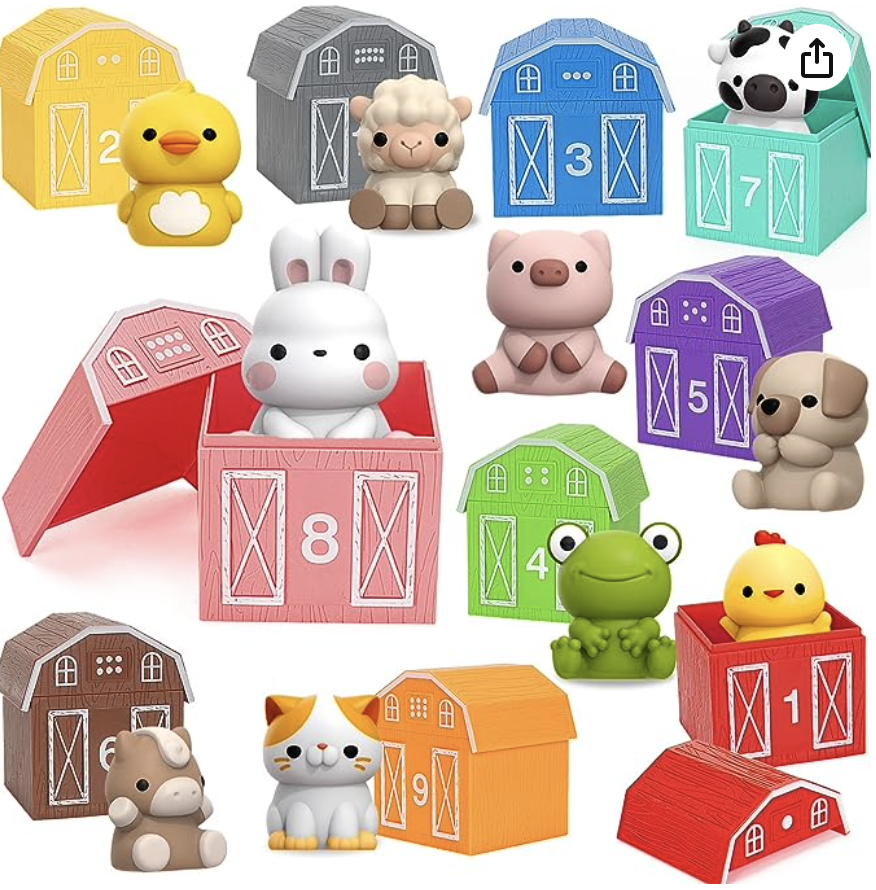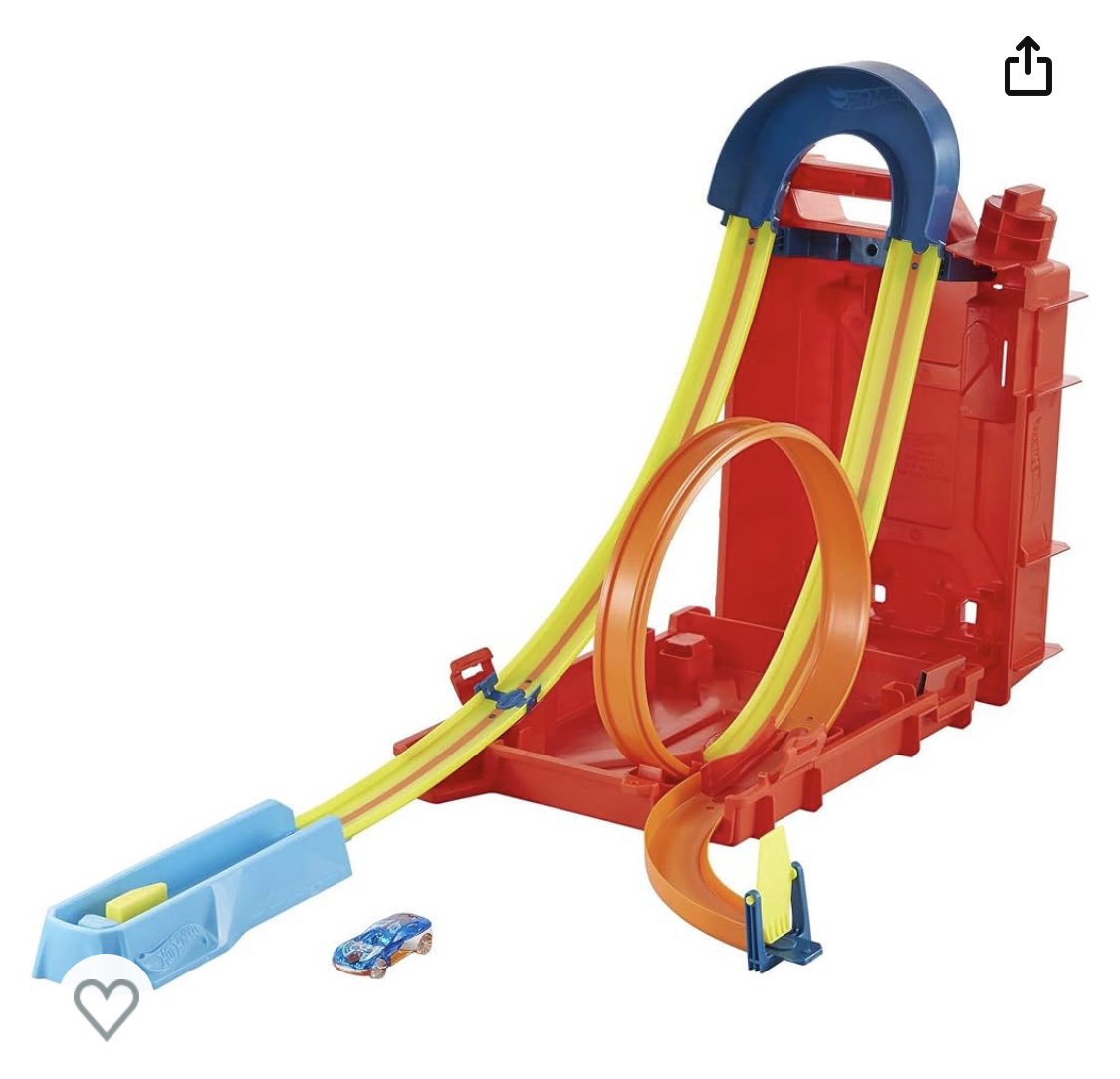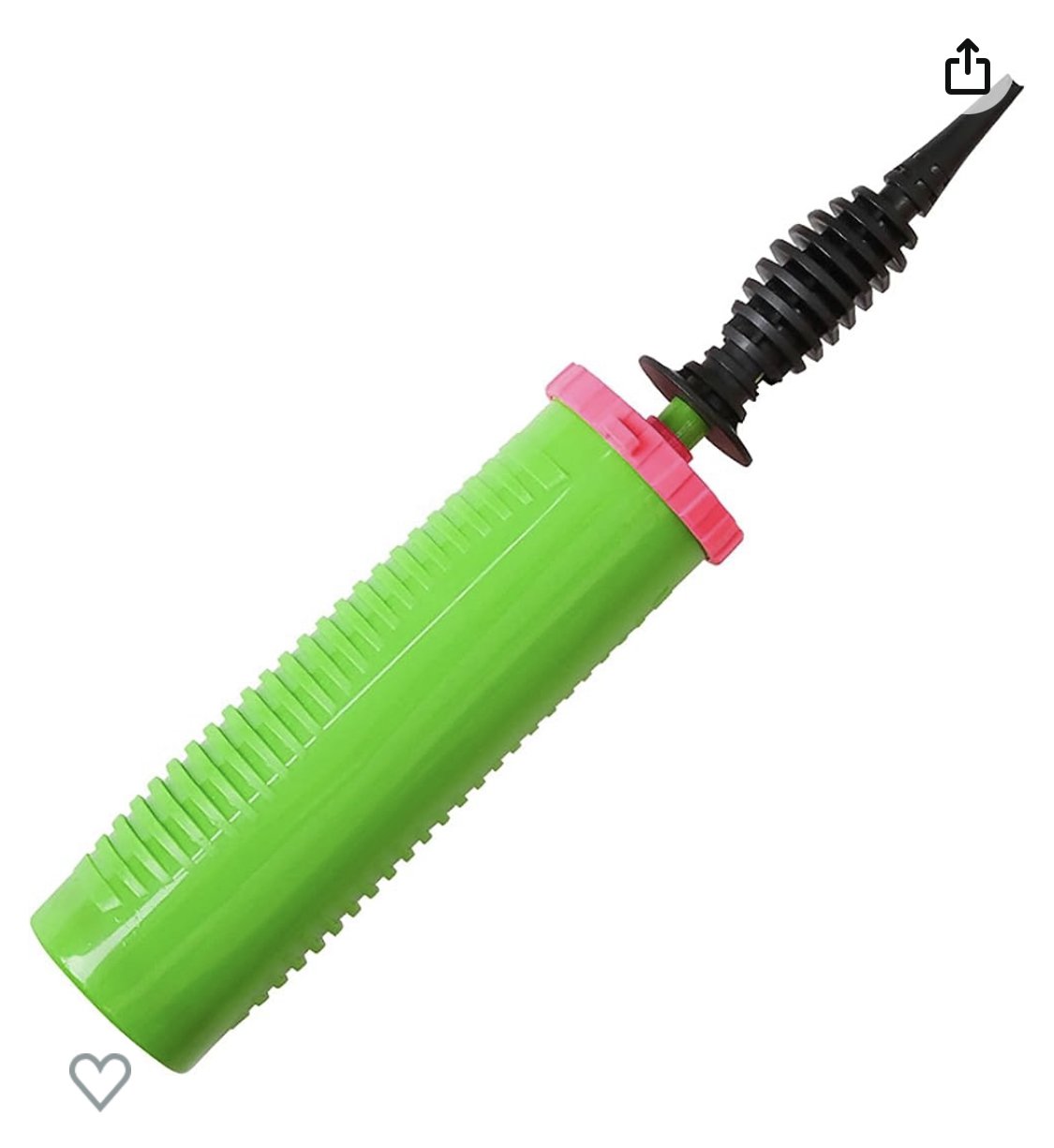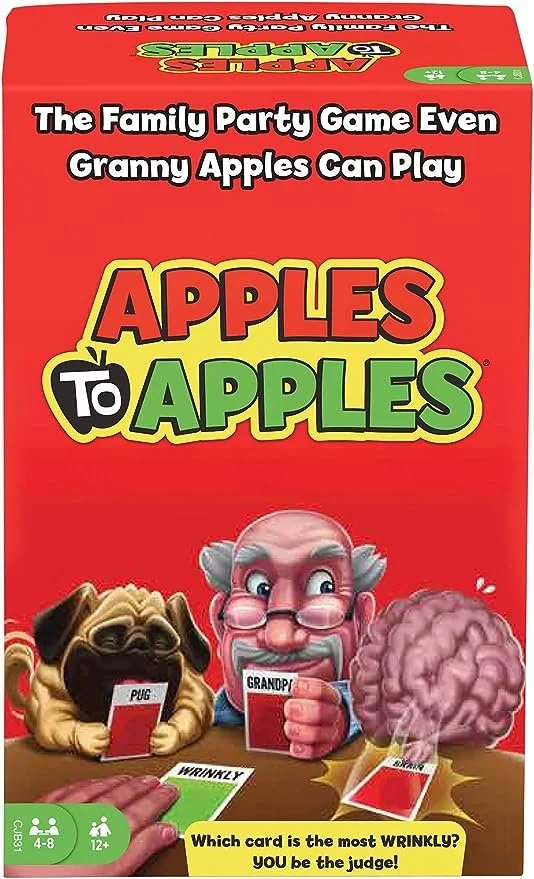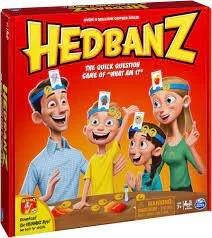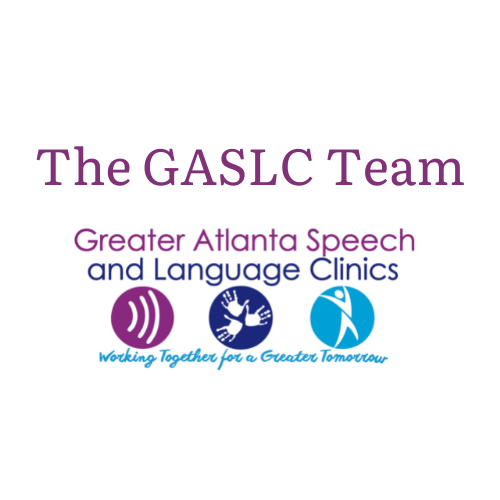Holiday Gift Guide 2023
Holiday time again already! Let’s get right down to it. This year’s Gift Guide is SO good! Brought to you by an awesome team of pediatric occupational, speech, and physical therapists who spend a lot of time playing with kids!
Kids learn through play, and toys can make some great tools. So check out this therapist approved list of toys along with suggestions for how you can use them to address specific skills. Happy shopping!
Physical & Occupational Therapy Baby Toys
We love this toy! The Innybin encourages hand strengthening by requiring little hands to push items through resistive elastic. The bright colors and textures facilitate sensory exploration and help get / keep attention! Durable and easy to clean.
This rattle is inexpensive and so versatile. It works on reach and grasp / release, targets grasping and visual-motor skills, is motivating for tummy time / weight shifting / crawling, and can “grow with the child” as a rattle first and then a ball for more advanced play.
These soft stacking blocks are great for little ones who are just learning to interact with toys. They are large enough and solid enough to stack, but soft enough to chew on and provide lots of different textures for tactile exploration.
I am all about toys that will grow with your child and this one is it! From infants through independent sitters, this gym will help promote reaching with hands and feet, tummy time, visual tracking, and sitting skills.
Physical & Occupational Therapy Toddler Toys
Squigz provide resistance for strengthening and can be used in tons of different ways: pushing together / pulling apart to work on bilateral coordination, pulling off a window or table for strengthening, putting several together to create something… the possibilities are endless! A lot of our kiddos love the proprioceptive input from pulling against the resistance.
Books are great for promoting so many fine motor and language skills, and these poke-a-dot books provide an extra-fun engaging feature that helps build fine motor strength and hand-eye coordination.
So fun that kids don’t even know they’re working on fine motor skills! The tongs help promote fine motor strength necessary for proper pencil and utensil grasp, while the game works on social/turn-taking skills, attention, and following directions.
These magnetic mix-and-match vehicles work on bilateral coordination and spatial orientation skills needed for daily living and pre-academic tasks such as self-feeding or snipping with scissors. You can use them to work on imitation of patterns, or discuss spatial concepts like front, middle and back!
This toy allows for kids to explore emotions while also working on fine motor and hand-eye coordination. Children can also explore opposite emotions as the toy has two-sides to work on understanding of opposite emotions.
This toy has been a hit from day one. Although this is technically a toddler toy, kids of many ages have enjoyed this one. It is the most borrowed toy in my room. Good for attention, hand-eye coordination, and visual tracking. Can be used for counting, color recognition, and more.
This toy can help with several developmental skills including shape and color recognition, ordering, logical thinking, spatial organization, gross motor and fine motor planning skills, and visual perception skills.
Ages 2 and up -
Encourages children to use their creativity and imagination while at the same time developing fine motor and pre-writing skills, Helps with problem-solving and cognitive development. It’s also very portable and can carry with you in the car.
This game helps with fine motor development and appropriate grasp and pinch patterns as well as working on sorting patterns and cooperative play. Using the hard open grabbers provides different challenges to strengthen little fingers and build fine motor skills (ages 3-5).
(OT) These bins are great for sensory input and encouraging creativity. They can increase fine motor strength when digging with fingers or scooping with a spoon, as well as visual motor skills like searching and finding hidden items, etc.
(Speech) I love activities that promote imaginative play and support sensory development. They're great for variety of ages and can be customized to the child's interest (ex: outer space, ocean, construction, food-themes, ect). I also love items that come with their own storage - easy clean-up is important.
A bike is a great tool that requires the whole body to work together. You have to look, move and think at the same time.
Lots of fun and a great life skill!
This is the most versatile and fun toy ever. Bounce it, bounce on it, roll over it, kick it, throw it, or catch it. Promotes balance, strength, body awareness, visual spatial skills, and visual tracking. It can be used alone or with a large group.
This structure is a great choice for early walkers through preschool age. It helps the development of so many gross motor skills such as crawling, standing and climbing. It also promotes imaginative play which is always a win!
This option is best suited for preschoolers through elementary-aged children. They work on challenging their balance and are a perfect rainy-day option when you're stuck inside and kids need to get their wiggles out. They can practice walking or jumping from each one or standing on one to play catch or squat.
Physical & Occupational Therapy School Age Toys
Work on all the fine motor and visual motor skills with this marble run and art easel that's designed to grow with your little one! Building and drawing on inclined surfaces helps support strengthening and stabilization of the shoulder, which is essential to improved control and precision in the hands.
Kids build it, then go in it! Skills the Build a Fort promotes: following printed schematic drawings, visual spatial skills, and problem solving.
Allows for creativity and lots of mobility while building it and while playing in it afterward.
I love this game for making screen time therapeutic but still fun! It works on following directions, visual scanning, problem solving, figure ground, fine motor control, and lots of other skills while following the clues to solve a mystery. Requires separate purchase of Osmo base for a tablet/iPad. Always on sale for Black Friday or Cyber Monday deals on Amazon!
Clack is an excellent game for visual motor and scanning skills. The game can be adapted to be played alone against a timer, or as instructions state against one or more opponents. This game elicits attention, speed, hand-eye coordination, and fine motor skills. Also addresses color recognition, and categorizing pictures and objects.
Speech Therapy Baby Toys
This toy is great for infants for fine motor skills, early concepts, cause and effect, and early play skills. Model early babbling while labeling animals or making animal sounds.
The Baby Tissue Box is back on the list this year because it is just too good! Model early core vocabulary while your little one has fun pulling these out and putting back in (e.g., pull, push, in, out).
Bubbles are great for our infant/young kiddo friends! You can work on core words like 'go, more, all done, up, down' etc. Can also work on core words like 'help' and 'open' to open the bubbles and help blowing the bubbles. Bubbles are always fun and provide many language opportunities for our young kids in therapy sessions.
Bubbles can target so many skills and are a great toy across all ages! For babies, bubbles encourage gestures like pointing and clapping. As you point to the bubbles say words with early developing sounds like “pop,” “more,” “bubble,” and “wow.” For toddlers, use verbal routines such as “ready, set, go!” Describe verbs as you play - smash, step, open, reach, pop, play, dip, blow, etc. For preschool and older, take turns and practice answering wh- questions “who has the bubble wand?” “Who is popping bubbles” “where is the bubble container?” Also describe bubbles by attributes!
This is a great toy to use with infants, toddlers, and school-age kids (depending on special interests/sensory preferences).
Super engaging (especially for little ones!) Use this toy to model play actions,
encourage play skills (e.g., turn-taking), and model age-appropriate speech sounds. You c
an also model language related to actions (“go”, “stop”, “spin”, “take”, “put”, “fall”), descriptions (colors, “on”, “off”, “up”, “down”, “fast”, “slow”), and more. Also great to model gestalts for a variety of purposes (“Give me blue”, “It’s so fast”, etc!)
This is also a great toy to target following directions.
Speech Therapy Toddler Toys
This toy is a favorite and was recommended by SEVERAL of our clinicians. See multiple ways to use below!
We love the Counting Surprise Party! We can use this set to work on all different kinds of activities:
Identifying and naming of familiar objects / colors/numbers (vocabulary),
Imitating action/environmental and onomatopoeic sounds, f
ollowing simple commands, i
dentifying actions (open, close, knock, hide, etc.) as well as describing objects
This toy is great for all ages and abilities. Kids often require help to open the individual presents, as well as as closing them again after. This toy presents opportunities for labeling, requesting, commenting, and protesting. You can even take the items out and place them in a sensory bin or other small containers, such as easter eggs for more versatility. All the presents are different colors, and have numbers, so even more school-based activities can be supported with the presents.
Use this set to address concepts such as counting, labeling colors and objects, modeling phrases: “let’s open, look at that, I love it, surprise! What’s next? Oh no, it’s empty! Thank you! It’s my/your turn.”
Use these fun eggs to model functional core words such as: "open" "push" and "help" with this toy! It's tricky for littles to open independently so they often have to request assistance. Colors and shapes inside are fun to open and find.
This recommendation came from a parent I’ve worked with that purchased it for another client of mine for his 2nd birthday. This little guy has a visual impairment and reportedly loves this activity table.
A fun and simple game for learning turn taking. Barnyard Bounce is made for kids 3+ years; however, in sessions I use it with 2 - 2 1/2-year-olds and their parents.
This truck is always a hit with my littlest friends. It is super engaging and it allows me to work on a variety of early language goals. This truck is great for environmental noises (car sounds, animal sounds), early vocabulary (colors, animals, shapes), and following directions. We use gestures when things fit (ex: clap hands) or when they are in the wrong place (ex: shake head no).
What little one doesn't like music? These fun instruments have the added feature of lighting up which is good for your little one with a visual impairment.
My kids age 4-7 absolutely love the ball popper. It creates engagement when a child has a difficult time popping it. It is super exciting when the balls pop out, and we use vocabulary like slow/fast, high/low, up/down.
Another HIGHLY RECOMMENDED toy by many of our therapists. Read on for a variety of ways to model language!
The Power Balloon car is a favorite! We can address many different kinds of skills with this one toy: i
dentifying / naming actions (open, close, push, fly, run), increasing phrase length, and requesting /commenting.
Balloons are a hit for all kids! This takes playing with a balloon to the next level. This toy can be tricky to set up, so your child will need help, opening an opportunity to communicate. Additionally, either cars or a rocket launcher can be put on to blow up the balloon, which is a great chance to pick and choose, as well as choosing the color of the balloon.
Parents can model language like, "it's flying," or "let's put on the balloon" for gestalt language processors, or core / fringe vocabulary such as "more," "again," "go," and colors of balloons.
This is a highly loved toy by all my clients! You can use with both toddlers and school-age kids. It’s SO fun and the set comes with everything you’d need!
Model play actions, use to encourage play skills (e.g., turn taking), and model age-appropriate speech sounds.
You can also model language related to animals (crab), vehicles (car), occupations (astronaut), actions (“blow”, “go”, “stop”, “fly”, “fall”, “crash”), and descriptions (colors, “on”, “off”, “up”, “down, “fast”, “slow”).
Can use to model gestalts for a variety of purposes (“Let’s get the balloon”, “It’s a crab”, and more)
Also use to target following directions!
This one of my most requested toys to play with in the clinic. It great for encouraging active and open-ended play. It promotes problem-solving skills and creates a ton of language opportunities.
Wind-up toys are so fun to incorporate in sessions and provide many opportunities to target various language skills! For late talkers, target basic core words like 'go, stop, more, all done, help'. Can also target identifying/using various basic action words, like 'jump, run, flip', etc., as well as basic nouns/descriptors to describe the wind-up toys. Also provides the opportunity for kids to initiate communication when the wind-up toys stop moving and/or they need help winding the toys up again. Endless ways to incorporate wind-ups into therapy sessions for our toddler-aged kids!
Play-doh is incredibly versatile. It allows for ample opportunities to model language and build imaginative play skills!
Not only is this a great cause and effect toy, but it is also fun. Because it is so silly and wild, there are great language opportunities for exclamations and comments, such as, "it went so high!" or "that's crazy!"
This toy can be used inside or taken outside for a change of scenery and generalization of skill. Based on your kid's interests, you can buy different stomp rockets that have dino rockets or different colored rockets to make it more engaging and interesting.
The language doesn't end with commenting, but there is also requesting and describing. "Can you help me?" for putting on the rockets or "that's a blue rocket" for describing the toy.
This is a great set that can target all different kinds of activities: i
dentifying / naming actions, food, or house objects (vocabulary), f
ollowing 1-2 steps commands,
taking turn during play, and r
equesting/ commenting/describing using various 3-5 word combinations.
The Fisher Price Piggy Bank is great for toddlers as it involves fine motor, play skills and various basic vocabulary can be modeled (open/close, colors, number, animals, in/out, body parts). This is another great toy to target following directions.
This toy is fun, engaging, and helpful for a range of concepts! It can be used to talk about colors, foods, following directions, and learning action words (eating, pushing, opening, closing, etc). It's so interactive that kids can appreciate it for long periods of time!
I love to use my picnic basket with foods to target a range of goals. We can work on labeling, following directions, categorizing, language expansion, and pretend play. Kids of all ages like to use this toy!
Pop up Pirate is a great cause and effect game that has so many other uses as well. Works for practicing the /r/ sound (arrr), or any speech sound. You can use the swords as trials, or categorizing colors. Another great game for following directions!
These flap books are a great way to get kids involved in reading and excited to turn the next page. They allow for great language opportunities to request and to label while reading.
Practice using gestures such as pointing, knocking on the flap before opening, or asking questions (“what is it? who’s inside?”) before opening.
These sticker books are great because they are reusable which allow for endless opportunities to be creative. These stickers are great for labeling, categories, requesting, and describing.
The animal farm is great for young toddlers. Vocabulary to practice can include: colors, animals, numbers, the list is endless! Concepts to work on include following directions, in/out, on/off, open/close, and matching animals while singing Old McDonald!
I have been using Grocery Go-Karts constantly in therapy! This game teaches higher level turn-taking, grocery store vocabulary, and problem solving. It's a simple, yet fun game for preschool/kindergarten age. Stack the grocery items in your cart and see who gets to the checkout first without all their items toppling over!
I LOVE magnet tiles! These allow kids to use their creative brains and build whatever they want. Options are endless. In therapy, I've built car garages, animal houses, princess mansions and rocket ships. You can target following directions, big/little, on/off, in/out, colors, shapes, problem solving, and so much more!
Magnetic Tiles are fun for preschool and school-age! The opportunities for imaginative play are endless which also means SO MANY language opportunities. Take turns, expand play, model language, and have fun with this toy!
So many language opportunities and gestalts to model with these for our gestalt language processors! Model gestalts:
Let’s stack it
Let’s knock it down
Let’s build
It’s red,
It’s a square.
It’s a red square.
I found it!
So many language opportunities with this simple toy! Model gestalts: “
Let’s build,
Here’s blue,
I did it,
Let’s roll it,
It’s rolling,
It’s slow/fast.” Also great for labeling colors.
Kids love the ball tower! It's great for cause-and-effect, colors, requesting, and using function words!
This set comes with many dinosaurs and a large truck. It comes with a dinosaur park activity play mat to help kids to build their own dinosaur world. I love toys that encourage both functional, symbolic, and pretend play. Play skills are the foundation for language skills. This dinosaur toy encourages planning and sequencing, body awareness and knowing where your limbs are in space and how to move them in relation to the body and environment, problem solving (the identification of a challenge, including what the challenge is, what strategies could be used to overcome it, and the subsequent performance to overcome it). This toy can be used with multiple children to encourage social skills to engage in reciprocal interaction with others (either verbally or non-verbally), to compromise with others, and to be able to recognize and follow social norms.
I love this game for preschoolers who need to work on social skills since they work together cooperatively. It also relies on simple problem solving skills and executive functions. Games are great for self-regulation if you win or lose. Executive function and self-regulation skills depend on three types of brain function: working memory, mental flexibility, and self-control. This game is a great exercise of these skills:
Working memory governs our ability to retain and manipulate distinct pieces of information over short periods of time.
Mental flexibility helps us to sustain or shift attention in response to different demands or to apply different rules in different settings.
Self-control enables us to set priorities and resist impulsive actions or responses.
Love love love this toy! It has so many facets! It helps develop fine motor skills but also helps language skills such as sorting, categorizing, ordering, and following directions. It encourages sustained attention and can be played alone or with others. With others, it can be great for taking turns, pretend play by ordering in restaurant, and making conversation.
I like the car track because it can be used with a variety of kids who need different things! It keeps them engaged and can be used to help with prepositions, verbs, adjectives, and more!
I like to use toy food to help with pretend play and following directions. You can use directions like “let’s cut it” “let’s open it” and “give me the ___”
I like balloons because they help keep kids engaged and excited! This balloon pump is an easy way to blow up balloons quickly, helping to keep kids engaged and help maintain attention.
Speech Therapy School Age Toys
This game is good for school aged kids working on vocabulary (synonyms/antonyms, definition, etc.), conversational skills, speech sounds, and overall intelligibility.
I love playing Sorry! with my older kids. It is a great board game to work on turn taking and accepting defeat when your piece has to go back home after a Sorry! card is drawn. It naturally has a lot of common articulation sounds (r, s, th) in the cards and when you are counting spaces. It is made for 2-4 players so it is a great way to involve the family in a game night! My older kids ask to play it week in and week out.
Headbanz is a great game to play with the whole family. It is a fun game to play to work on describing without making it feel like 'work.'
I love playing Scattegories with school-aged kids. I love using this specifically for any articulation kids by focusing on using their target sounds during the game. Also helps build various vocabulary skills to increase expressive and receptive language skills.
Grouch Couch can be used with school-age kids.
Such an exciting game and can be super motivating for a lot of kiddos. Use to encourage play skills (e.g., turn taking), target speech sounds related to the game (/ch/ for items use are putting on the “couCH” or use it between practicing other speech sounds unrelated to the game.
You can model language related to objects (“couch”), actions (“put”, “take”, “push”), descriptions (colors, “in”, “out”, “on”, “off”), and more. Also
model expanded utterances when working on increasing length of utterances or producing complete sentences. You c
an model gestalts for a variety of purposes (“Let’s put it on”, “It’s my turn”, etc.) Also
use to target following directions and
work on pronouns to describe who’s turn it is, who got what in the game, what happened to a person, etc.
The Adventure Car Track is something I pull out with a variety of clients. I use it the most with my school-aged friends, but I've never had a child reject this activity regardless of age or ability. Additionally, it's a quieter table activity that keeps them highly engaged while teaching cause-and-effect, problem-solving, and creative thinking skills.
This is one of my favorite game for school age kids! As you work together to build a path to beat the ogres to the treasure, there are lots of great opportunities to work on making inferences, problem solving, and considering multiple solutions. This game also promotes team work and is great with multiple players!
BONUS: Feeding Toys / Tools!
This item is great for introducing kids into the kitchen! The set comes with child-safe knives, peelers, and other items that encourage a child to get involved in food preparation. A great first step to making memories together in the kitchen!
This plate makes eating fun! Whether your child is a picky eater or not --- mealtime should be enjoyable for all!
This book has recipes for kids (ages 4-9) that are easy to follow and allow kids to be creative in the kitchen! Each recipe comes with fun facts and silly jokes.
THANK YOU to our incredible team of clinicians for contributing such fun ideas for toys and ways to play this year! Have questions about additional ways you can use one of these toys (or a toy you already have) to target specific skills your child is working on? Reach out to your therapist - we are here to help!




